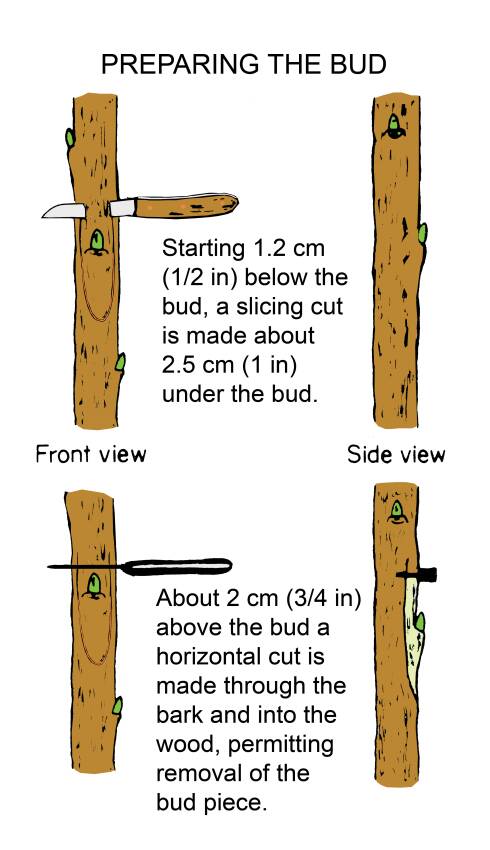T-budding is a common budding type, but must be done with dormant scions and active rootstocks.
The bark must be slipping.
The term T-budding comes from the shape of the cut made in the rootstock which is shaped like a "T".

Two cuts are made to form the T and the sides peeled back to allow the insertion of the scion "shield".
Because of this, the rootstock needs to be actively growing and the bark has to "slip"

In contrast, the scion shield must be dormant and consists of only a single vegetative bud.
T-budding can be performed in the early spring, as June budding or in the fall.
T-budding is usually a field operation and usually has a high success rate.

When preparing the scion, some species have a better take if the inner wood is removed from the T-bud.




T-buds at various stages of healing.



T-buds are usually wrapped with rubber bands leaving the bud exposed.


Honeylocust and sugar maple are commonly T-budded.


Click on the button below to see t-bud grafting video.


